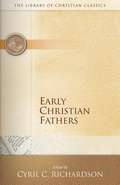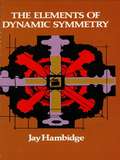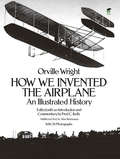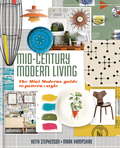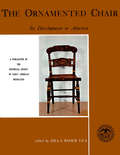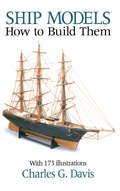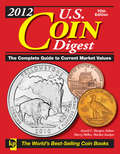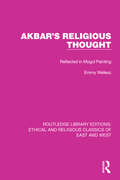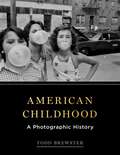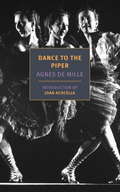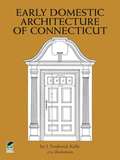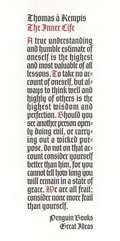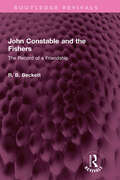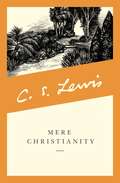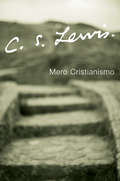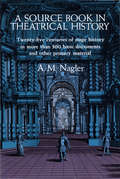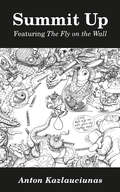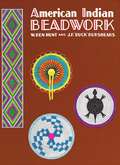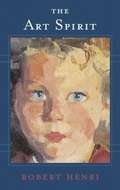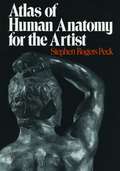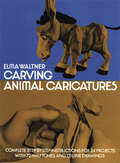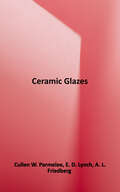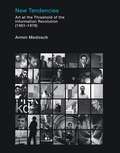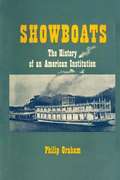- Table View
- List View
Early Christian Fathers
by Cyril C. RichardsonThis selection of writings from early church leaders includes work by Clement of Rome, Ignatius, Polycarp, Irenaeus, Athenagoras, and Justin Martyr. Long recognized for the quality of its translations, introductions, explanatory notes, and indexes, the Library of Christian Classics provides scholars and students with modern English translations of some of the most significant Christian theological texts in history. Through these works--each written prior to the end of the sixteenth century--contemporary readers are able to engage the ideas that have shaped Christian theology and the church through the centuries.
The Elements of Dynamic Symmetry (Dover Art Instruction)
by Jay HambidgeIs design intuitive or is it consciously and methodically worked out? Are there basic rules governing design that, when learned, will facilitate the creative process? These questions have been asked by artists, art historians, and art critics throughout the ages.Convinced that design was not purely instinctive, Jay Hambidge (1867-1924) spent much of his life searching for the technical bases of design. He found his answer in dynamic symmetry, one of the most provocative and stimulating theories in art history. Hambidge's study of Greek art convinced him that the secret of the beauty of Greek design was in the conscious use of dynamic symmetry -- the law of natural design based upon the symmetry of growth in man and in plants. But Hambidge, who was not only a theoretician but also a practicing artist, did much more than analyze classical art and its principles of design: he worked out a series of root rectangles that the artist, using the simple mathematics supplied in this book, can easily follow and apply in his own work.Originally published as a series of lessons in Hambidge's magazine, The Diagonal, this engrossing book explains all the basic principles of dynamic symmetry. Part I sets forth the fundamental rectangles with their simple divisions based on the proportioning law found in nature; Part II explains compound rectangles, many of which were taken from or suggested by analysis of objects of Greek art. Whether read for its historical importance in art theory, for its illuminating insights into Greek art, or for its practical value to today's artists and commercial designers, The Elements of Dynamic Symmetry has much to offer anyone who is interested in the principle of design.
How We Invented the Airplane: An Illustrated History
by Orville WrightIt was the realization of a dream as old as mankind. On December 17, 1903, two bicycle mechanics from Dayton, Ohio, achieved the first sustained, powered, heavier-than-air flight in a machine of their own design and construction. This book offers a concise and fascinating history of that remarkable accomplishment, much of it in the words of the inventors themselves. The heart of the book is Orville Wright's personal account, written in connection with an obscure lawsuit filed against the U.S. government. Long forgotten until a typewritten copy was discovered among the Wright papers at the Library of Congress, it is the best, most detailed account of how the Wright brothers succeeded in creating the machine that lifted man into the sky on wings.The brothers first became interested in the problem of flight after reading about the glider experiments of Otto Lilienthal, a 19th-century German engineer. Experimenting first with kites and gliders, they developed a revolutionary wing design that helped solve the crucial problem of maintaining lateral equilibrium. Later, they added a movable rudder that eliminated the tendency of the machine to go into a tailspin. In addition to these critical innovations, the two inventors developed new accurate tables of "life" pressures and an original theory of air propellers. Slowly, methodically, with patience, perseverance, ingenuity, and inspired invention, they solved the problems that had defeated so many experimenters before them.Finally, on a gusty winter day in North Carolina, the Wright brothers flew their little motor-driven biplane off the sand at Kitty Hawk (actually Kill Devil Hills) and into the pages of history. Although the first flight lasted only about 12 seconds and covered barely 120 feet, it was the first time a machine carrying a man and driven by a motor had lifted itself from the ground in controlled free flight. A new era had begun and the world would never be the same again.The achievement of the Wright brothers is placed in historical context in the absorbing and informative introduction to this volume, written by Fred C. Kelly, author of two standard works on the Wrights. Mr. Kelly has also written an illuminating commentary, including fascinating anecdotes about the Wrights, their personalities and later aspects of their career. As an extra bonus, a lively popular account of the Wrights' success, written in 1908 by both brothers, has been included in an Appendix. Enhanced by 76 photographs, including many rare views of the Wrights and their flying machines, this book offers a thrilling reading experience for anyone interested in aviation, its pioneers, or the mechanics of flights.
Mid-Century Modern Living: The Mini Modern's Guide to Pattern and Style
by Keith Stephenson Mark HampshireBursting with beautiful ideas for bringing a signature mid-century look into your own space, as well as practical advice on what will work where, this is an essential guide for any lover of interior design and mid-century style. In this beautifully photographed book, Mark and Keith of Mini Moderns show you how to create a timeless mid-century look in your own homeKnown for their striking use of pattern and colour, Mark and Keith's designs are inspired by everything from childhood memories to commentaries on popular culture, and through this lens they explore how different influences and designers have created key mid-century looks. They delve into the cornerstones of mid-century style, from colour and pattern to materials and curation, and share their secrets on how to bring together the things you love to create your own look. They also include inspirational case studies to demonstrate particular looks, from Beatnik Beach House to Scandi Rustic, Seaside Modern to Studio Townhouse.
The Ornamented Chair
by Zilla Rider LeaDiscriminating decorators and collectors, no less than dealers and researchers in antiques, have long felt the need of a comprehensive study of the ornamented chair and its development in America. This book is the product of an effort to satisfy that need and at the same time to bring new pleasures to lovers of beautiful furniture.The book is based on photographic and research material collected by the late Esther Stevens Brazer, who spent a lifetime in the study and revival of early American decoration.The authors are all qualified researchers, teachers, and decorators. In their text they present a general history of chair types, facts regarding ornamentation, and informative accounts of some of the leading craftsmen and decorators of the various periods. The final chapter of the book briefly relates the history of the Society and describes how its members carry forward the efforts of Esther Stevens Brazer, maintaining in their research, their teaching, and their restorations the standards of an old craft and the traditions of its finest workmen.
The Ornamented Chair
by Zilla Rider LeaDiscriminating decorators and collectors, no less than dealers and researchers in antiques, have long felt the need of a comprehensive study of the ornamented chair and its development in America. This book is the product of an effort to satisfy that need and at the same time to bring new pleasures to lovers of beautiful furniture.The book is based on photographic and research material collected by the late Esther Stevens Brazer, who spent a lifetime in the study and revival of early American decoration.The authors are all qualified researchers, teachers, and decorators. In their text they present a general history of chair types, facts regarding ornamentation, and informative accounts of some of the leading craftsmen and decorators of the various periods. The final chapter of the book briefly relates the history of the Society and describes how its members carry forward the efforts of Esther Stevens Brazer, maintaining in their research, their teaching, and their restorations the standards of an old craft and the traditions of its finest workmen.
Ship Models: How to Build Them (Dover Woodworking)
by Charles DavisComplete, step-by-step instructions for building schooners, galleons, clipper ships, more. Includes scale plans for 1846 clipper ship Sea Witch. Excellent guide for both the novice and the practiced woodworker — from the first steps in selecting proper materials to final task of painting the model. Over 150 photographs.
2012 U.S. Coin Digest: The Complete Guide To Current Market Values
by David C. HarperThis complete reference includes all circulating and non-circulating coins, from early American Token Coinage to modern commemorative issues of the 21st century. The reference features a fully illustrated guide to all United States coin issues, including early issues of Hawaii and offering the most up-to-date pricing in up to 11 grades. Also included is coinage of the Philippines and Puerto Rico while under U.S. administration. Includes new Territorial quarters and America the Beautiful quarters.
Akbar's Religious Thought: Reflected in Mogul Painting (Ethical and Religious Classics of East and West #9)
by Emmy WelleszOriginally published in 1952, the first part of this book gives a portrait of Akbar (1542-1605), Emperor of India, not as a War Lord and Empire Builder, but as a man deeply absorbed in questions of the Spirit. It follows him in his quest after the various religions professed in India and the doctrines of the Christian faith. The text is illustrated by numerous reproductions of contemporary miniatures. Their style which, under Akbar’s inspiring patronage, resulted from the collaboration of Muslim and Hindu artists who became acquainted with European paintings, reflects the universality of the Emperor’s mind. The second part of the book is concerned with the rise and development of this style.
American Childhood: A Photographic History
by Todd BrewsterA remarkable collection of over 200 stunning photographs of children—from the Civil War era to the present—that captures the ever-changing experience of childhood throughout American history.Did Americans &“invent&” childhood? Author Todd Brewster believes we did, or at least childhood as &“a period of life cordoned off from that of full maturity, covered with a veil of protection, and subject to a program of nurture.&” That&’s the inspiration behind this rich, compelling volume of rarely seen historical images drawn from the photography collections at the Library of Congress, The Metropolitan Museum of Art, the New York Public Library, and the Magnum Photo Agency as well as dozens of other archives, flea markets, and antique shops. The result is a carefully curated paean to American youth: 200-plus photos from all parts of American history, joined by a series of deeply insightful essays on the topic of the American child. American Childhood reveals American children of all types: white, Black, gay, straight, poor, middle-class, upper class, in cities, on farms, at work, at play, lost in reverie, posing for the camera, or captured in their innocence as the lens gazes at them from afar. Some of them would go on to fame: A young Mark Twain is here. So is a juvenile Thomas Edison, Shirley Temple, Lady Gaga, Sammy Davis Jr., Truman Capote, and dozens of others. Can you see the spark of genius in the life of a child? Brewster thinks so. Still, most subjects here are unknown; in many cases a photograph may be the only public trace they have left behind. Both a powerful study of American childhood and a beautiful gallery of extraordinary photography, American Childhood is a terrific addition to an under-appreciated part of American history.
Dance to the Piper
by Joan Acocella Agnes De MilleBorn into a family of successful playwrights and producers, Agnes de Mille was determined to be an actress. Then one day she witnessed the Russian ballet dancer Anna Pavlova, and her life was altered forever. Hypnotized by Pavlova's beauty, in that moment de Mille dedicated herself to dance. Her memoir records with lighthearted humor and wisdom not only the difficulties she faced--the resistance of her parents, the sacrifices of her training--but also the frontier atmosphere of early Hollywood and New York and London during the Depression. "This is the story of an American dancer," writes de Mille, "a spoiled egocentric wealthy girl, who learned with difficulty to become a worker, to set and meet standards, to brace a Victorian sensibility to contemporary roughhousing, and who, with happy good fortune, participated by the side of great colleagues in a renaissance of the most ancient and magical of all the arts."
Early Domestic Architecture of Connecticut (Dover Architecture)
by J. Frederick KellyBased on personal observation of surviving examples and research into colonial records, this book includes 242 measured diagrams (windows, door frames, construction details, etc.) and 192 photographs of more than 150 homes, 1650 to 1800. Authentic and invaluable. 434 illustrations.
The Inner Life
by Thomas À KempisThroughout history, some books have changed the world. They have transformed the way we see ourselves—and each other. They have inspired debate, dissent, war and revolution. They have enlightened, outraged, provoked and comforted. They have enriched lives—and destroyed them. Now, Penguin brings you the works of the great thinkers, pioneers, radicals and visionaries whose ideas shook civilization, and helped make us who we are. Penguin's Great Ideas series features twelve groundbreaking works by some of history's most prodigious thinkers, and each volume is beautifully packaged with a unique type-drive design that highlights the bookmaker's art. Offering great literature in great packages at great prices, this series is ideal for those readers who want to explore and savor the Great Ideas that have shaped the world. The Inner Life is taken from Thomas à Kempis's The Imitation of Christ, a classic Christian devotional that has taught and inspired generations. .
John Constable and the Fishers: The Record of a Friendship (Routledge Revivals)
by R B BeckettFirst published in 1952, John Constable and the Fishers is based on original letters which have never been published in full before. These have been woven into a connected narrative dealing with the friendship which existed between Constable and various members of the Fisher family, more particularly the Bishop of Salisbury (a personal friend of George III who entrusted him with the education of Princess Charlotte as heiress to the throne) and his nephew the Archdeacon of Berkshire. The Archdeacon’s letters give a picture of life in a cathedral closed and country vicarages, reminiscent of Trollope’s Barchester and Thomas Hardy’s Wessex. In return Constable confides his ideals and ambitions; and as Mr. Grigson suggests in his introduction, the encouragement he received from the Fishers may have had a decisive effect on the future of landscape art. The letters are fully annotated and are illustrated with connected works done by Constable. This book will of interest to students of history, art and literature.
Mere Christianity
by C. S. LewisA forceful and accessible discussion of Christian belief that has become one of the most popular introductions to Christianity and one of the most popular of Lewis's books. Uncovers common ground upon which all Christians can stand together.
Mero Cristianismo
by C. S. LewisEsta obra poderosa y práctica es una de las más populares y queridas introducciones a la fe cristiana jamás escritaMero Cristianismo reúne las legendarias charlas radiofónicas de C. S. Lewis que se transmitieron durante tiempos de guerra, charlas en las cuales él se proponía "explicar y defender las creencias que han sido común a casi todos los cristianos de todos los tiempos." Rechazando los límites que dividen las distintas denominaciones del cristianismo, C. S. Lewis ofrece una inigualable oportunidad al creyente y al no creyente para escuchar un argumento fuerte y racional para la fe cristiana.Esta es una colección de la genialidad de Lewis que aún se mantiene viva para el lector moderno y que a la vez confirma su reputación como el escritor y pensador más importante de nuestros tiempos. Mero Cristianismo es su libro más popular y ha vendido millones de ejemplares a través del mundo.
A Source Book in Theatrical History
by A. M. NaglerA rich resource for students of theater and theater historians, this volume features an annotated collection of more than 300 unusually interesting and detailed articles. Passages by contemporary observers from ancient Greece to modern times include notes on acting, directing, make-up, costuming, stage props, machinery, scene design, and much more.
Summit Up
by Anton KazlauciunasThe more we look, the more we see. The more we see, the more we understand. With our eyes we see, we ruminate, speculate, compare, compose, even cogitate a little, animadvert perhaps, create balance, empathy, order out of chaos, understanding rises from conflict, beauty out of the undefined, trust replaces prejudice and suspicion, light emerges from the darkness, love out of hate, peace from war. We create hopes of dreams, belief out of impossibility, reality materializes from imagination. And so artists draw. Please read the pictures and think for yourselves.
American Indian Beadwork
by J.F. "Buck" Burshears W. Ben HuntOne of the original classical books on Indian beadwork art. Includes detailed directions for various beading stitches as well as making and stringing a loom.
The Art Spirit: Notes, Articles, Fragments of Letters and Talks to Students, Bearing on the Concept and Technique of Picture Making, the Study of Art Generally, and on Appreciation
by Robert HenriEmbodying the entire system of Robert Henri's teaching, The Art Spirit contains much valuable advice, critical comment, and inspiration to every student of the arts.
Atlas of Human Anatomy for the Artist
by Stephen Rogers PeckStephen Rogers Peck's Atlas of Human Anatomy for the Artist remains unsurpassed as a manual for students. It includes sections on bones, muscles, surface anatomy, proportion, equilibrium, and locomotion. Other unique features are sections on the types of human physique, anatomy from birth to old age, an orientation on racial anatomy, and an analysis of facial expressions. The wealth of information offered by the Atlas ensures its place as a classic for the study of the human form.
Carving Animal Caricatures
by Elma WaltnerElma Waltner, Crafts Designer from Hurley, South Dakota, has put together a series of specific instructions that will enable even the amateur, using the simplest tools and materials, to progress easily from raw wood to an interesting hand-carved animal. All that's needed is a small block of two-inch wood -- redwood, white pine, sugar pine, western pine, basswood, cottonwood, or any other soft wood -- and a simple pocket or carver's knife. Inexpensive watercolors or enamels, shellac, and varnish are perfect for decoration and finishing.Each step in the carving is made absolutely clear through photographs and angle sketches. There are profile patterns (to be traced on the block) for all of the 24 projects, ranging from Bolivar Bull through Casper Camel to Sammy Stegosaurus. Horatio Horse, Gulliver Goat, and Esmerelda Elephant serve as teaching pieces, with complete instructions from start to finish for each. Once these have been mastered, the same methods are easily applied to the rest of the projects, and special steps in the carving of these are again shown in photographs.The poses and animals represented here are only a beginning in animal caricature, and the hobbyist will soon find himself developing other animals and other poses of these familiar friends to add to his wooden menagerie. They will find in these and in their own projects an almost inexhaustible source of gentle relaxation and delight.
Ceramic Glazes
by Cullen W. ParmeleeThe preparation of this book on the subject of ceramic glazes was the result of many years of research on glazes, teaching the subject to ceramists and constant and close observation of work recorded throughout the world. Although literature on glazes is widespread, at no time has it been assembled into one single volume so completely as here. It is presented in such a way that both student and professional will benefit by the revealing contents. Professor Parmelee was a deep student of the subject and recognized as the foremost authority on glazes.
New Tendencies: Art at the Threshold of the Information Revolution (1961 - #1978)
by Armin MedoschNew Tendencies, a nonaligned modernist art movement, emerged in the early 1960s in the former Yugoslavia, a nonaligned country. It represented a new sensibility, rejecting both Abstract Expressionism and socialist realism in an attempt to formulate an art adequate to the age of advanced mass production. In this book, Armin Medosch examines the development of New Tendencies as a major international art movement in the context of social, political, and technological history. Doing so, he traces concurrent paradigm shifts: the change from Fordism (the political economy of mass production and consumption) to the information society, and the change from postwar modernism to dematerialized postmodern art practices. Medosch explains that New Tendencies, rather than opposing the forces of technology as most artists and intellectuals of the time did, imagined the rapid advance of technology to be a springboard into a future beyond alienation and oppression. Works by New Tendencies cast the viewer as coproducer, abolishing the idea of artist as creative genius and replacing it with the notion of the visual researcher. In 1968 and 1969, the group actively turned to the computer as a medium of visual research, anticipating new media and digital art.Medosch discusses modernization in then-Yugoslavia and other nations on the periphery; looks in detail at New Tendencies' five major exhibitions in Zagreb (the capital of Croatia); and considers such topics as the group's relation to science, the changing relationship of manual and intellectual labor, New Tendencies in the international art market, their engagement with computer art, and the group's eventual eclipse by other "new art practices" including conceptualism, land art, and arte povera. Numerous illustrations document New Tendencies' works and exhibitions.
Showboats: The History of an American Institution
by Philip GrahamThis book is a delightful and authoritative record of America''s showboats from the first one, launched in 1831, to the last, ultimately tied up at a St. Louis dock. It is also a record of the men and women who built and loved these floating theaters, of those who performed on their stages, and of the thousands who sat in their auditoriums. And, lastly, it is a record of a genuine folk institution, as American as catfish, which for more than a century did much to relieve the social and cultural starvation of our vast river frontier. For these showboats brought their rich cargoes of entertainment--genuine laughter, a glimpse of other worlds, a respite from the grinding hardship of the present, emotional relaxation--to valley farmers, isolated factory workers and miners, and backwoodsmen who otherwise would have lacked all such opportunities. To the more privileged, the showboats brought pleasant reminder of a half-forgotten culture. They penetrated regions where churches and school had not gone, and where land theaters were for generations to be impossible. Like circuit preachers, they carried their message to the outer fringes of American civilization. In spite of many faults, it was a good message. The frontier had created this institution to fill a genuine need, and it lasted only until other and better means of civilizing these regions could reach them--good roads, automobiles, motion pictures, schools, churches, newspapers, and theaters. But although the showboats have passed into history, they have left a rich legacy. As long as the Mississippi flows into the Gulf, their story will fire the imagination of Americans. Showboating has become so legendary that few Americans know what this unique institution was really like. In Showboats, at long last, the true story emerges. It differs in many important respects from the motion picture and fictional versions to which Americans are accustomed, but it is not a whit the less glamorous. Philip Graham has told his story with imagination, genuine insight, and complete devotion to facts. No one who is interested in America''s past should fail to read it. This book is a delightful and authoritative record of America''s showboats from the first one, launched in 1831, to the last, ultimately tied up at a St. Louis dock. It is also a record of the men and women who built and loved these floating theaters, of those who performed on their stages, and of the thousands who sat in their auditoriums. And, lastly, it is a record of a genuine folk institution, as American as catfish, which for more than a century did much to relieve the social and cultural starvation of our vast river frontier. For these showboats brought their rich cargoes of entertainment - genuine laughter, a glimpse of other worlds, a respite from the grinding hardship of the present, emotional relaxation - to valley farmers, isolated factory workers and miners, and backwoodsmen who otherwise would have lacked all such opportunities. To the more privileged, the showboats brought pleasant reminder of a half-forgotten culture. They penetrated regions where churches and school had not gone, and where land theaters were for generations to be impossible. Like circuit preachers, they carried their message to the outer fringes of American civilization. In spite of many faults, it was a good message. The frontier had created this institution to fill a genuine need, and it lasted only until other and better means of civilizing these regions could reach them - good roads, automobiles, motion pictures, schools, churches, newspapers, and theaters. But although the showboats have passed into history, they have left a rich legacy. As long as the Mississippi flows into the Gulf, their story will fire the imagination of Americans. Showboating has become so legendary that few Americans know what this unique institution was really like. In Showboats, at long last, the true story emerges. It differs in many important respects from the motion picture and fictional versions to which Americans are accustome...
